Tom Lippincott - Modern Jazz Guitar Lessons - Part V
Published on 02 February 2016
Excerpt from Tom's series, available at www.mikesmasterclasses.com
Modern Jazz Guitar Series:
Part I: http://youtu.be/p_38jZd5OTQ
Part II: http://youtu.be/9Fx_qI8pLMU
Part III: http://youtu.be/e-_LjahnzjY
Part IV: http://youtu.be/lyzaRfaUbW8
Part V: http://youtu.be/IzE0OyrPW3c
Modern Jazz Guitar
The twenty-first century has, so far, been an exciting time for jazz with a flurry of creativity and innovation energized by the newest generation of jazz musicians. The guitar has become a more important instrument in jazz than ever before, and jazz groups featuring guitarists are now the norm rather than the exception.
Guitarists with unprecedented virtuosity and originality have driven the instrument's rise in prominence and have established a new "modern sound" that is becoming part of the jazz vocabulary. Players such as Kurt Rosenwinkel, Ben Monder, Jonathan Kreisberg, John Stowell, Gilad Hekselman, Adam Rogers, Lage Lund, and Nir Felder are inventive, ingenious, and forward-thinking while still managing to maintain a strong connection to the tradition. If you have heard these and other modern jazz guitarists and wondered How do they get that sound?, then this series of classes is for you.
The Modern Jazz Guitar series was created for the intermediate to advanced jazz guitarist who already has a basic command of traditional jazz vocabulary including the basics of improvising over chord changes, comping/chord vocabulary, and knowledge of standard chord progressions. This multi-part series examines the modern jazz guitar style in systematic detail and is divided into five classes that cover melody (single note improvisation), harmony (using chords for comping, chord soloing, and self-comping), rhythm, and tone/equipment. An informative introductory class examines the roots of the modern style and includes a discussion of the right and left hand techniques that many of the modern players use.
Numerous musical examples, including specific licks, phrases, and chord voicings in the style of several modern jazz guitarists, are demonstrated during the classes and provided in the written materials in traditional notation, tablature, and/or chord grid form, but the lessons have been designed to be open-ended enough that you will be encouraged to find your own path and work toward developing your unique musical voice.
Modern Jazz Guitar Part 5, Rhythm 2 and Tone/Equipment, covers:
• exploration of rhythms used in modern jazz, continued from Part 4
• examples of ideas for "breaking out of the clave prison" in 7/4 time in order to achieve freedom and rhythmic variety when soloing and comping in that time signature
• exploration of polyrhythms and odd groupings in 7/4 time, with examples and demonstrations
• discussion of converting songs written in common time signatures into 5/4 and 7/4, with examples of both short and long form for both meters
• chord changes to Ben Monder's unique arrangement of "All the Things You Are" with performance example
• explanation of true polyrhythms and their uses in metric modulations
• exercises for gaining facility with metric modulations between all different meters in two parts, first tapping out the rhythms, then playing them on the guitar
• examples of applying different metric modulations to single note lines and comping on a one-chord vamp, as well as on a standard chord progression
• suggestions for using the MP3 play-along 5/4 and 7/4 vamps for practice
• advice on playing at fast tempos, with demonstration
• discussion of equipment used by various modern jazz guitarists, including guitars, picks, amplifiers, and effects, with a guided tour of Tom's pedal board and demonstrations of effective use of each pedal
• list of suggested representative modern jazz recordings by various guitarists and non-guitarists
• backing MP3 play-along tracks used in the video for all examples and etudes, as well as 5/4 and 7/4 practice groove tracks, available for free download at www.tomlippincott.com
• running time: 73 minutes
• includes 6 pages of written examples, exercises, practice tips, and listening lists
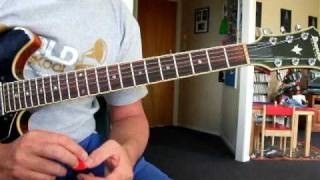 Dix Nacey Jazz Guitar Lesson 37 - Comping on Ornit...
Dix Nacey Jazz Guitar Lesson 37 - Comping on Ornit...
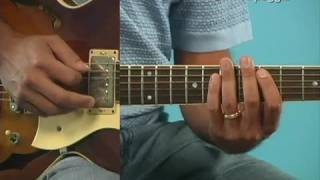 Jazz Guitar Lesson: D Minor 7 Arpeggio
Jazz Guitar Lesson: D Minor 7 Arpeggio
 guitar scales lessons - mixolydian mode - scales -...
guitar scales lessons - mixolydian mode - scales -...
 Jazz Guitar Comping - Bossa Nova Rhythm - Lesson E...
Jazz Guitar Comping - Bossa Nova Rhythm - Lesson E...
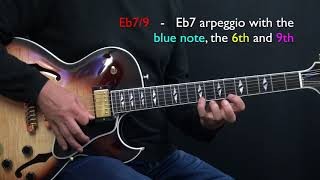 Bb Jazz Blues - Easy Jazz Guitar Lesson by Achim K...
Bb Jazz Blues - Easy Jazz Guitar Lesson by Achim K...
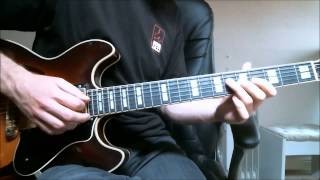 Jazz Guitar Licks - Charlie Christian Swing Lick
Jazz Guitar Licks - Charlie Christian Swing Lick
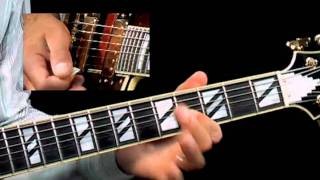 1-2-3 Jazz - #6 Georgia On My Mind - Jazz Guitar L...
1-2-3 Jazz - #6 Georgia On My Mind - Jazz Guitar L...
 Jazz guitar chords and comping - 13 exercises
Jazz guitar chords and comping - 13 exercises
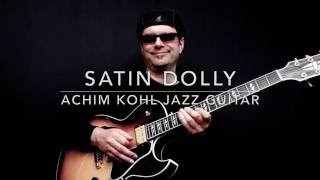 Satin Dolly - Achim Kohl - Jazz Guitar Improvisati...
Satin Dolly - Achim Kohl - Jazz Guitar Improvisati...
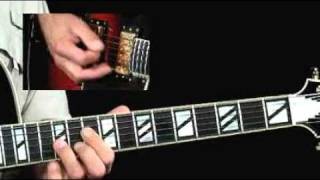 A Touch of Bop #2 - Jazz Up Your Blues - Jazz Blue...
A Touch of Bop #2 - Jazz Up Your Blues - Jazz Blue...